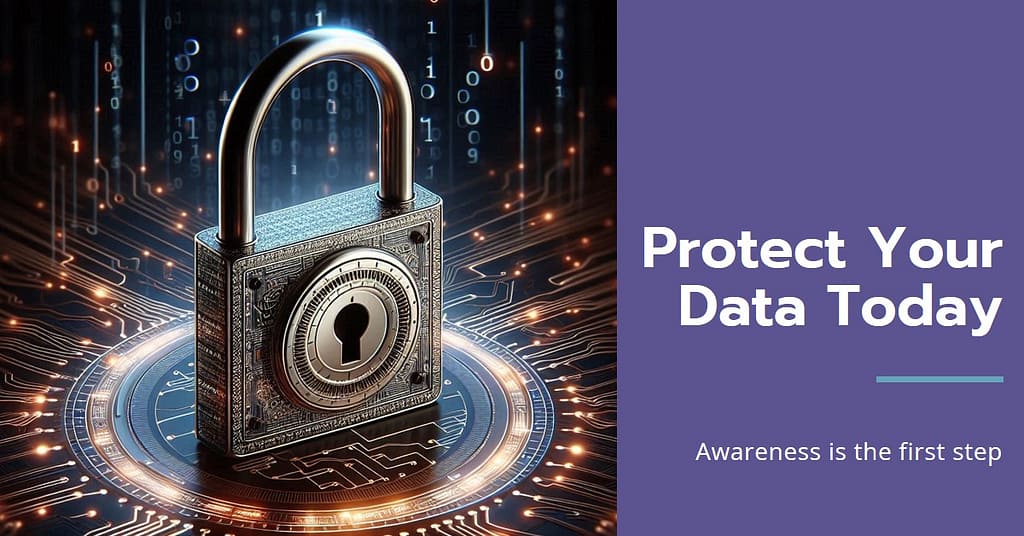
Introduction (The Calm Before the Storm)
We stay in a international of seamless connectivity. A international wherein our lives are interwoven with the virtual fabric. From banking to social media, from healthcare to entertainment, we believe the net with our maximum touchy data. But what if that believe is misplaced? What if the virtual international, so convenient, is likewise a minefield of unseen threats? This is not a dystopian fantasy; it is the truth of cybersecurity within side the twenty first century. Today, we are now no longer simply customers; we are objectives. And the stakes are better than ever.
Section1 The Anatomy of a Cyberattack (Understanding the Enemy):
Let’s dissect the enemy. Understanding how cyberattacks paintings is step one to protecting towards them.
Phishing: The Art of Deception:
Phishing emails, disguised as valid communications, entice sufferers into revealing touchy data. It’s social engineering at its finest, exploiting human psychology.
Spear phishing objectives unique people with customized assaults, making them even extra effective.
Example: A faux electronic mail out of your financial institution asking you to affirm your login info.
Malware: The Silent Invader:
Malware, quick for malicious software program, encompasses quite a number threats, consisting of viruses, worms, and ransomware.
Ransomware encrypts your records and needs price for its release, crippling corporations and people alike.
Example: Wanna Cry, which unfold globally, locking down crucial systems.
Keyloggers silently file each key stroke a person makes, stealing passwords and different touchy data.
DDoS Attacks: Overwhelming the Fortress:
Distributed Denial of Service (DDoS) assaults flood servers with traffic, making them unavailable to valid customers.
Botnets, networks of inflamed computers, are regularly used to release those assaults.
Example: Attacks focused on on line gaming servers, disrupting gameplay.
SQL Injection: Exploiting the Weak Link:
SQL injection assaults make the most vulnerabilities in internet packages to advantage unauthorized get admission to to databases.
Attackers can manage database queries to retrieve, modify, or delete touchy records.
Example: A internet shape that accepts person enter with out right sanitization.
Zero-Day Exploits: The Unseen Threat:
Zero-day exploits goal vulnerabilities which can be unknown to software program developers.
These exploits are specifically risky due to the fact there aren’t any patches to be had to mitigate them.
Example: Stuxnet, a complicated trojan horse that focused Iran’s nuclear facilities.
Insider Threats: The Enemy Within:
Not all threats come from outside. Disgruntled personnel or contractors can pose substantial risks.
Data breaches because of inner actors may be specifically unfavorable because of privileged get admission to.
Example: An worker stealing client records earlier than leaving the company.
Social Engineering: Hacking the Human:
Manipulating humans into acting moves or divulging exclusive data.
Pretexting, baiting, and quid seasoned quo are not unusual place tactics.
Example: A scammer calling a assist table pretending to be an IT worker.
Section 2: The Digital Footprint: You’re More Exposed Than You Think (The Reality Check):
We go away at the back of a path of virtual breadcrumbs anywhere we go.
Social Media: The Open Book:
Over sharing private data on social media makes you prone to identification robbery and focused assaults.
Location records, photographs, and private info may be utilized by attackers to construct a profile of you.
Example: Posting holiday photographs with your private home deal with visible.
The Internet of Things (IoT): The Expanding Attack Surface:
Smart devices, from thermostats to refrigerators, are regularly poorly secured, developing new access factors for attackers.
IoT botnets may be used to release large-scale DDoS assaults.
Example: A compromised clever digital digicam used to undercover agent on a household.
Cloud Computing: The Shared Responsibility:
While cloud companies make investments closely in safety, customers are nonetheless chargeable for securing their very own records and packages.
Misconfigurations and susceptible passwords can cause records breaches.
Example: Leaving an S3 bucket publicly accessible.
Mobile Devices: The Pocket-Sized Vulnerability:
Mobile malware is at the rise, focused on smartphones and tablets.
Public Wi-Fi networks may be hotspots for eavesdropping and man-in-the-center assaults.
Example: Installing a malicious app from an untrusted source.
Online Banking and E-commerce: The High-Value Target:
Financial transactions are top objectives for cybercriminals.
Phishing and malware may be used to thieve login credentials and credit score card data.
Example: A faux on line keep designed to thieve credit score card info.
Online gaming: The Social Vulnerability:
Online gaming structures are social networks wherein humans may be socially engineered, and wherein bills comprise economic data.
Account takeovers, and object robbery are not unusual place.
Example: Voice chat is used to persuade a person to surrender their password.

Section 3: Fortifying Your Defenses: Practical Steps to Stay Safe (The Counterattack)
Now, let’s speak approximately a way to guard your self.
Strong Passwords and Multi-Factor Authentication (MFA): The First Line of Defense:
Use strong, specific passwords for every of your bills.
Enable MFA each time feasible to feature an additional layer of safety.
Use a password manager.
Software Updates and Patches: Keeping Your Systems Secure:
Regularly replace your running systems, packages, and firmware to patch safety vulnerabilities.
Enable automated updates to make sure you are continually protected.
Firewalls and Antivirus Software: Building a Digital Fortress:
Install and preserve a firewall to dam unauthorized get admission to for your network.
Use official antivirus software program to discover and get rid of malware.
Use VPN and Secure Connections: Encrypting Your Traffic
Prefer to use a Virtual Private Network (VPN) to encrypt your net traffic, particularly on public Wi-Fi networks.
Look for web sites with HTTPS encryption.
Data Backups and Disaster Recovery: Preparing for the Worst:
Regularly again up your records to an outside force or cloud storage.
Develop a catastrophe healing plan to reduce the effect of a cyberattack.
Cybersecurity Awareness Training: Educating Yourself and Others:
Educate your self and your own circle of relatives approximately cybersecurity first-class practices.
Be cautious of suspicious emails, links, and attachments.
Principle of Least Privilege:
Grant customers simplest the minimal vital get entry to to carry out their tasks.
This limits the capability harm from compromised accounts.
Network Segmentation:
Divide your community into smaller, remoted segments.
This prevents attackers from transferring laterally throughout your community.
Incident Response Plan:
Develop a plan for a way to reply to a cyberattack.
This consists of steps for holding the attack, recuperating statistics, and notifying affected parties.
Regular Security Audits and Penetration Testing:
Conduct everyday safety audits to pick out vulnerabilities.
Hire moral hackers to carry out penetration trying out and simulate real-global attacks.
Section 4: The Future of Cybersecurity: Staying Ahead of the Curve (The Evolving Landscape)
Cybersecurity is a continuously evolving field.

Artificial Intelligence (AI) and Machine Learning (ML): The Double-Edged Sword:
AI and ML may be used to come across and save you cyberattacks, however they also can be utilized by attackers to create extra state-of-the-art threats.
AI may be used to come across anomalies, and ML may be used to locate styles of malicious activity.
Quantum Computing: The Next Frontier:
Quantum computer systems have the capability to interrupt modern encryption algorithms, posing a widespread chance to cybersecurity.
Post-quantum cryptography is being evolved to deal with this chance.
Blockchain Technology: The Decentralized Security:
Blockchain era may be used to create steady and obvious structures for statistics garage and transactions.
It also can be used to beautify identification control and authentication.
Zero Trust Security: The New Paradigm:
The Zero Trust version assumes that no person or tool have to be relied on via way of means of default.
It calls for strict identification verification and non-stop monitoring.
Microsegmentation of networks is a key component.
Cybersecurity Mesh Architecture (CSMA):
CSMA is an architectural technique that promotes interoperability among safety tools.
It permits for a extra bendy and adaptable safety posture.
DevSecOps:
Integrating safety practices into the software program improvement lifecycle.
“Shifting left” on safety.
You were given it! Let’s end strong, including intensity to the destiny of cybersecurity and concluding with a effective name to action.
Section 5: The Human Element: Cybersecurity as a Shared Responsibility (The Collective Defense)
Technology by myself isn’t always enough. Cybersecurity is basically a human issue.
Cybersecurity Culture:
Building a subculture of cybersecurity recognition inside agencies and communities.
Promoting open verbal exchange approximately safety dangers and satisfactory practices.
Emphasizing that everybody has a position to play in defensive statistics.
Cybersecurity Education:
Integrating cybersecurity schooling into faculty curriculums and expert education applications.
Empowering people with the know-how and abilities to guard themselves online.
Addressing the cybersecurity abilities gap.
Ethical Hacking and Bug Bounty Programs:
Encouraging moral hackers to pick out and file vulnerabilities.
Implementing computer virus bounty applications to praise safety researchers for his or her contributions.
Creating a collaborative technique to safety.
International Cooperation:
Strengthening global cooperation to fight cybercrime.
Establishing worldwide requirements and protocols for cybersecurity.
Sharing intelligence and sources to deal with transnational threats.
Privacy and Data Protection:
Advocating for more potent private ness policies and statistics safety laws.
Empowering people with manage over their private statistics.
Holding agencies answerable for statistics breaches.
Cybersecurity Governance:
Developing strong cybersecurity governance frameworks.
Ensuring responsibility and transparency in cybersecurity practices.
Establishing clean roles and duties for cybersecurity professionals.
Psychological issue of Social engineering:
Understanding the psychology at the back of social engineering attacks.
Training people to understand and withstand manipulation tactics.
Promoting vital wondering and skepticism.
Cyber coverage:
Understanding the position of cyber coverage in mitigating economic losses from cyberattacks.
Evaluating cyber coverage regulations and coverage.
Integrating cyber coverage right into a complete hazard control strategy.
Conclusion: Your Digital Life, Your Responsibility (The Call to Action)
The virtual global is a double-edged sword. It gives unprecedented comfort and connectivity, however it additionally offers unheard of dangers. We can not find the money for to be passive observers within side the face of cyber threats. Cybersecurity isn’t simply an IT issue; it is a societal imperative.

We must:
Embrace a proactive mindset: Don’t watch for a cyberattack to happen. Take steps now to guard your self and your statistics.
Stay informed: Cybersecurity is a continuously evolving field. Stay updated at the modern day threats and satisfactory practices.
Be vigilant: Be cautious of suspicious emails, links, and attachments. Question everything.
Take ownership: Your virtual lifestyles is your responsibility. Take manage of your safety.
Advocate for change: Support regulations and tasks that sell cybersecurity recognition and schooling.
Share know-how: Educate your friends, family, and co-workers approximately cybersecurity satisfactory practices.
Demand responsibility: Hold agencies answerable for defensive your statistics.
Support moral hacking: Support applications that permit moral hackers to locate and assist restoration vulnerabilities.
Practice precise virtual hygiene: Like washing your fingers prevents disease, precise virtual conduct save you virtual disease.
The destiny of cybersecurity relies upon on all of us. Let’s paintings collectively to create a more secure and extra steady virtual global. The time to behave is now. Your virtual lifestyles relies upon on it.



